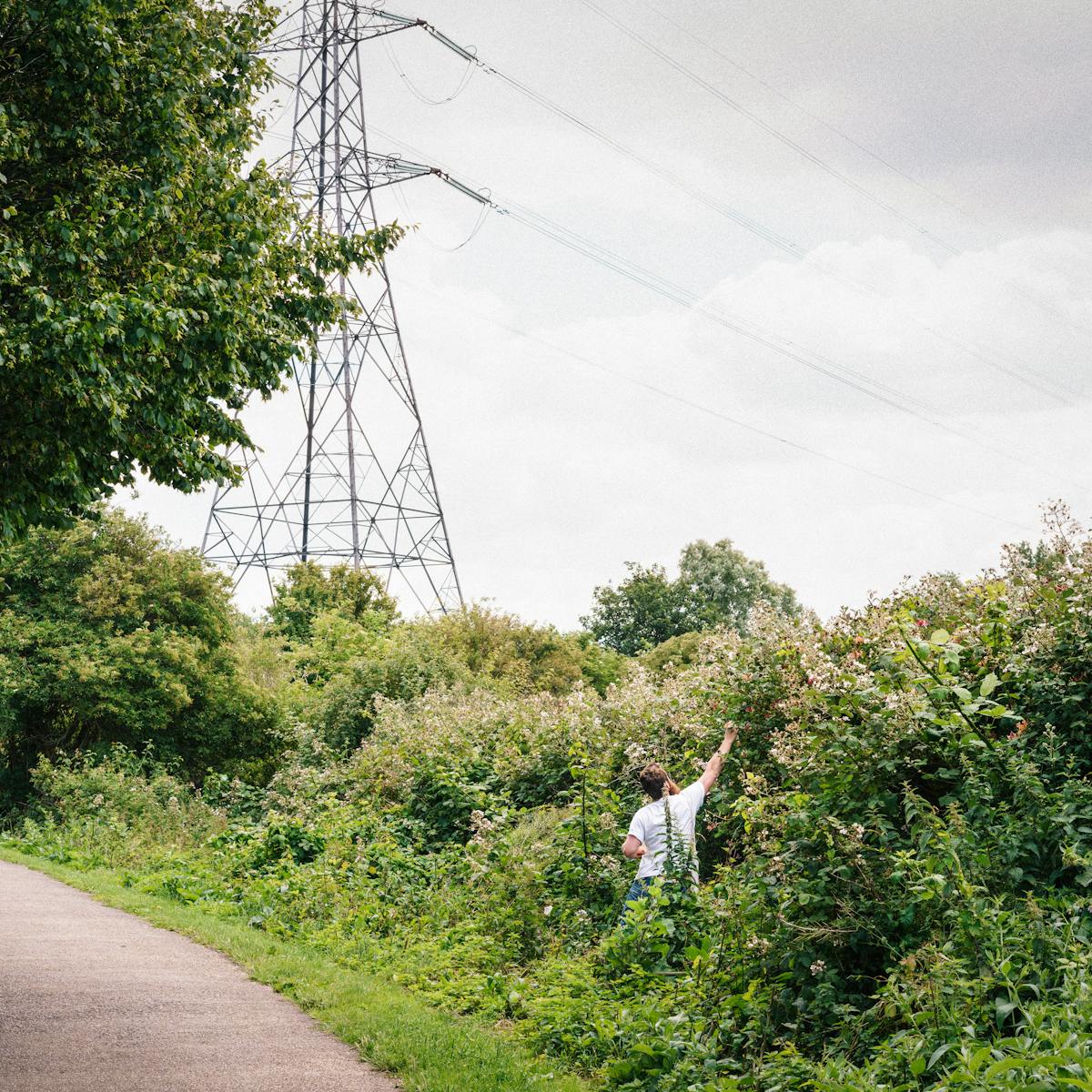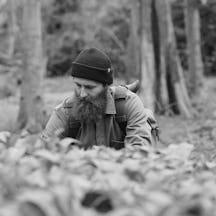Wross Lawrence is a professional forager whose discerning eye spots nutritious plants growing in unexpected urban places. Here he braves thorny thickets to recreate sweet treats from an 18th-century ‘receipt’ book belonging to Sarah Tully, Lady Hoare, the first wife of a London City banker.
Foraging was a long-forgotten skill until very recently. But now people are taking more interest in what is going into their meals, and wild plants are highly prized by the world’s leading chefs.
Wild plants were a part of everyday meals and home remedies in the 17th and 18th centuries. They were an integral part of our food culture and are mentioned in many cookbooks from the time. I went out to source some of the ingredients that appear in Sarah Tully’s recipe book, which dates from around 1732.
There were hundreds of recipes to choose from, all with unusual ingredients and many with more than unusual methods. For instance, one used ground deer antler as the rising agent in a cake, and another suggested using a fox’s skull as a pestle.
As a forager living in the city, I was spoilt for choice with recipes, because a surprising number of potential ingredients grow in urban places. I decided on a blackberry wine recipe and a wild rose gumball recipe. I was especially excited about the gumballs, as I had never heard of anything quite like them before. Scanning through the recipe, I couldn’t imagine precisely what I was going to end up with.
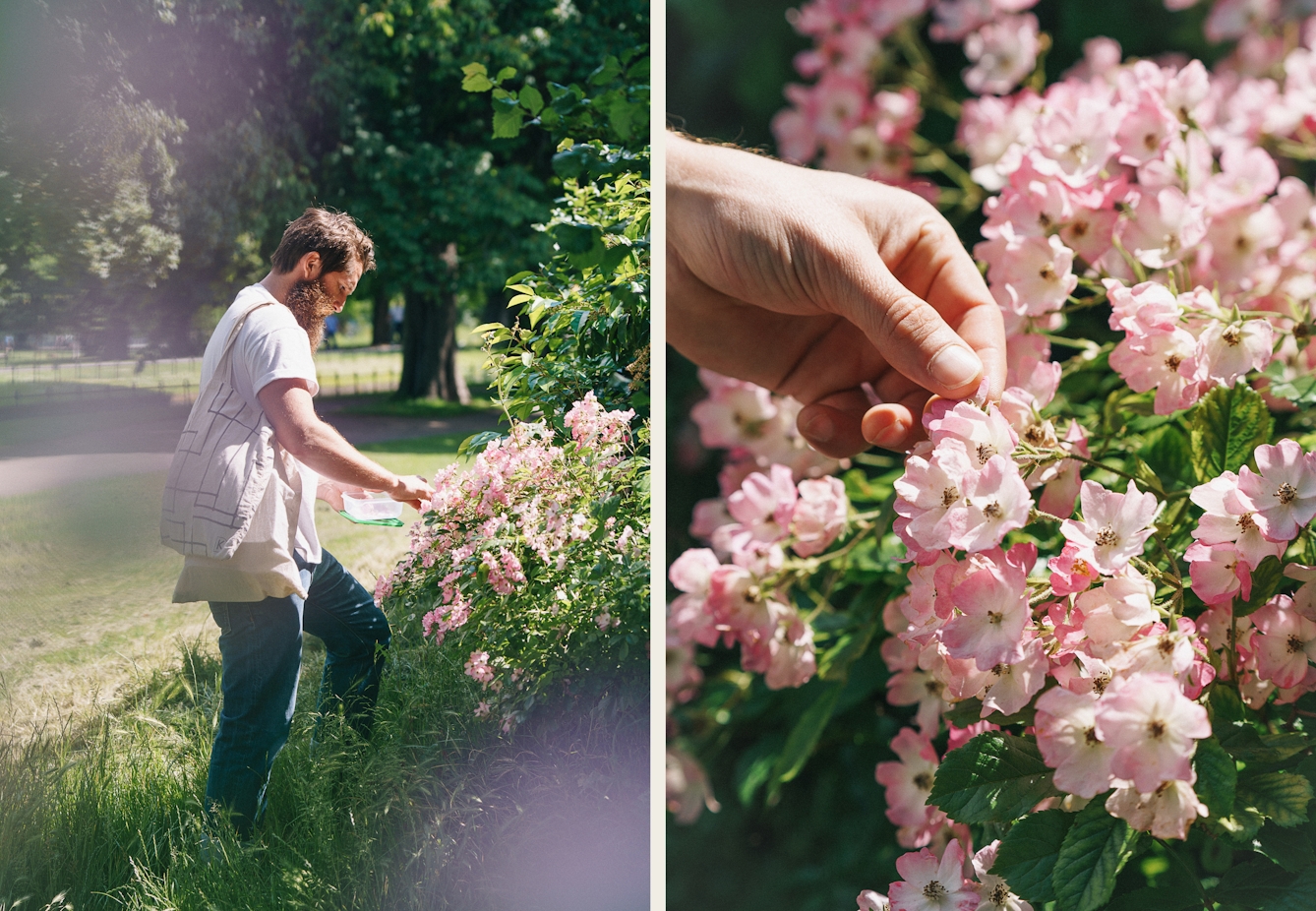
"The wild rose, or Rosa canina, thrives in rough ground such as park edges, verges, wasteland, marshes and commons."
Rose gumballs
To forage for the first wild ingredient, photographer Marco Kesseler and I headed into the parks of north London on the hunt for an iconic wildflower: the wild rose, or Rosa canina. It thrives in rough ground such as park edges, verges, wasteland, marshes and commons.
There are a few different types of wild rose, but they all have similar characteristics. They have oval leaves with serrated edges that grow in parallel up the stem. Stems grow in a tangle and are covered in thorns. But the most significant identifying feature is the flower itself, which has five petals that can vary in colour from white and pink, to just pink, or a deep purple.
These petals surround a gold centre, where lots of golden filaments rise from the ovary of the flower and create a distinctive fuzzy appearance. We tried to find flowers in the glow of the sun’s beams, as they have a far stronger scent than those growing in the shade.
It didn’t take long before we were in luck: we spotted one just off the path, climbing up a bank on the verge of a park. After collecting several handfuls of petals, we returned home to make rosewater. I added the flowers to boiling water and simmered until all colour left the petals. Once the mixture was cold, I then strained out the flowers, leaving wild rosewater.
Rosewater is an antioxidant and anti-inflammatory used to treat problems like eczema and conjunctivitis. Or it can be added to your gumballs.
In pictures
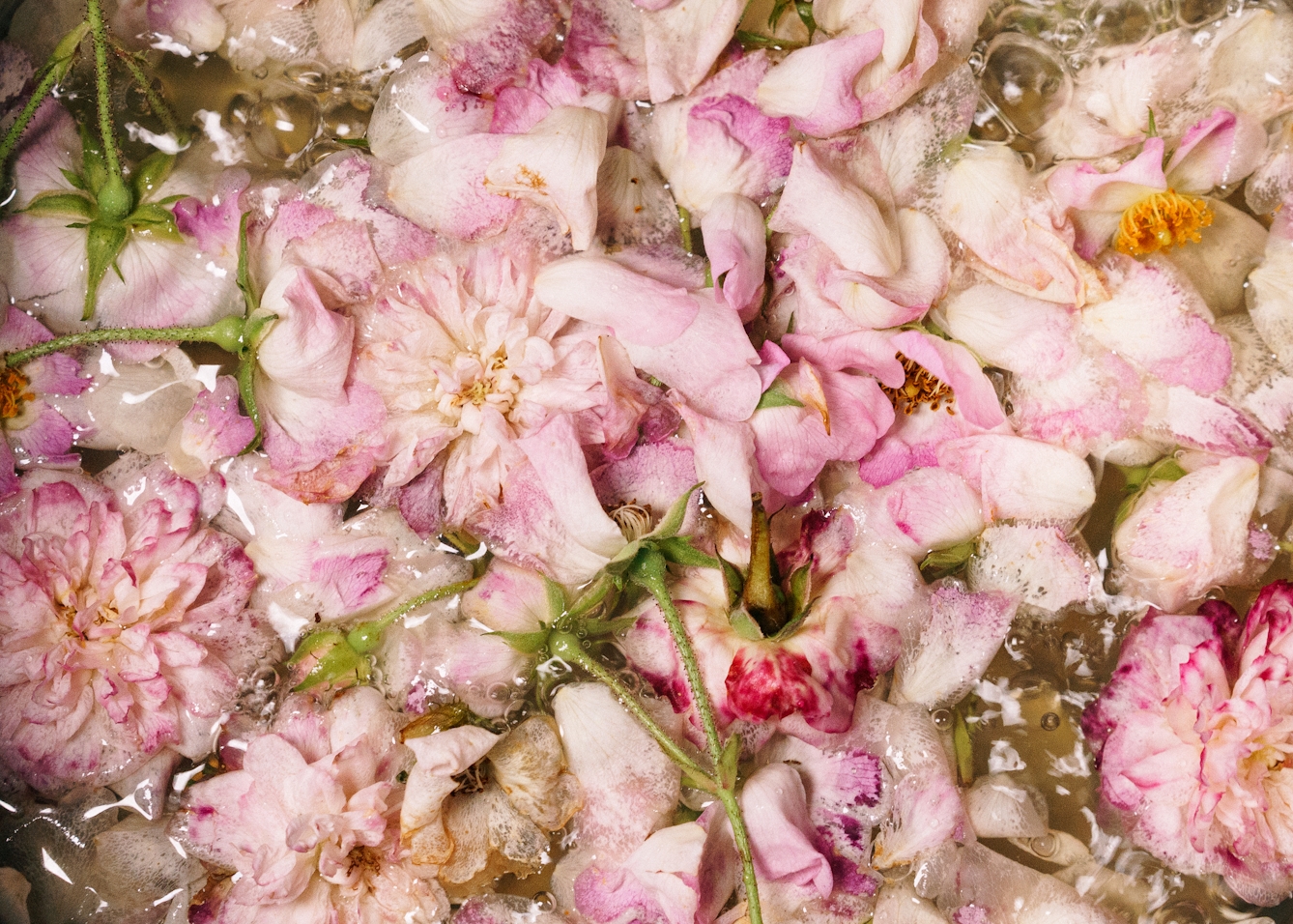
The flowers were added to boiling water and simmered until all colour left the petals. Once the mixture was cold, it was strained, leaving wild rosewater.
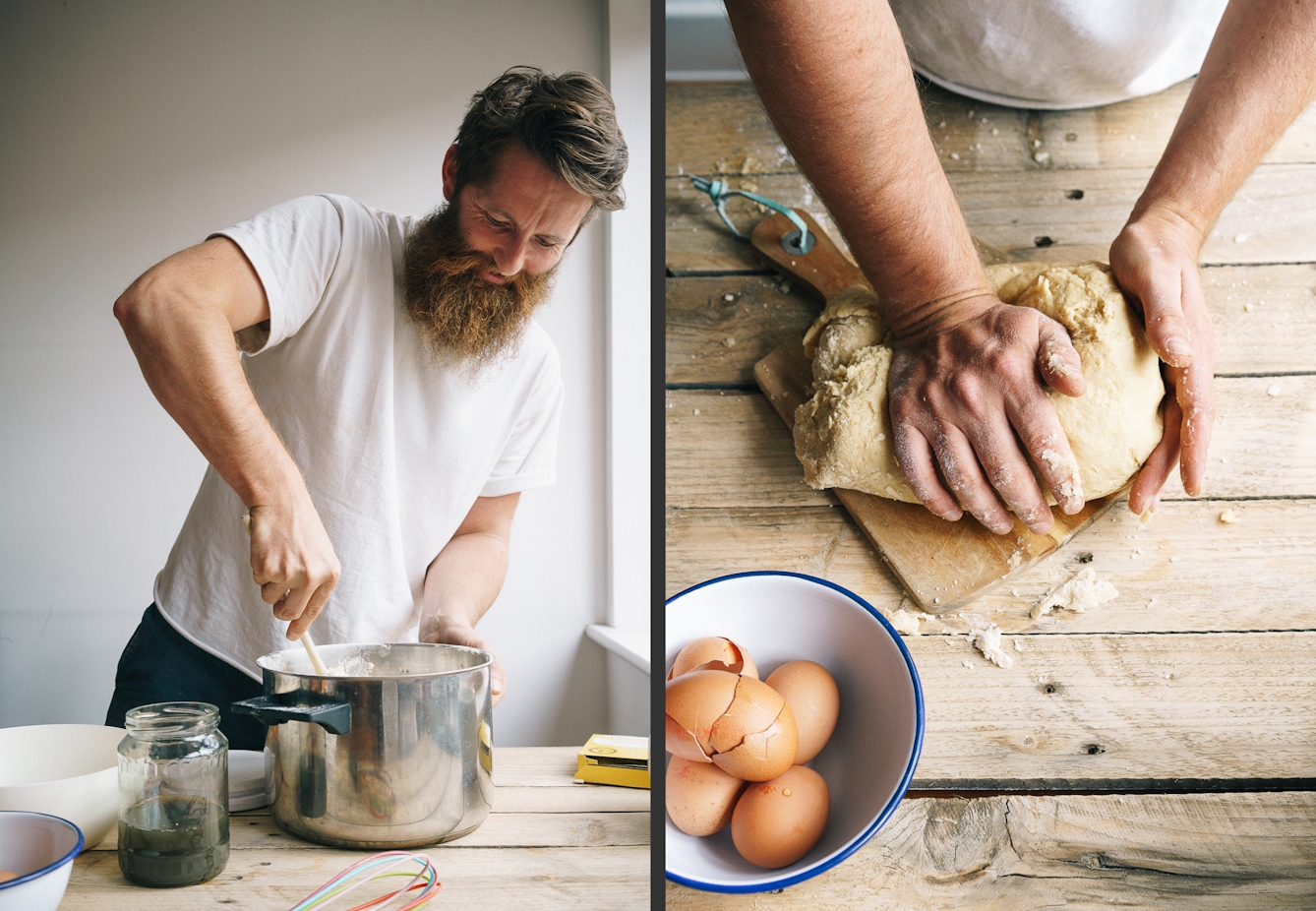
The flour, sugar, salt, eggs, yeast, cream and a little rosewater were all mixed into a paste.
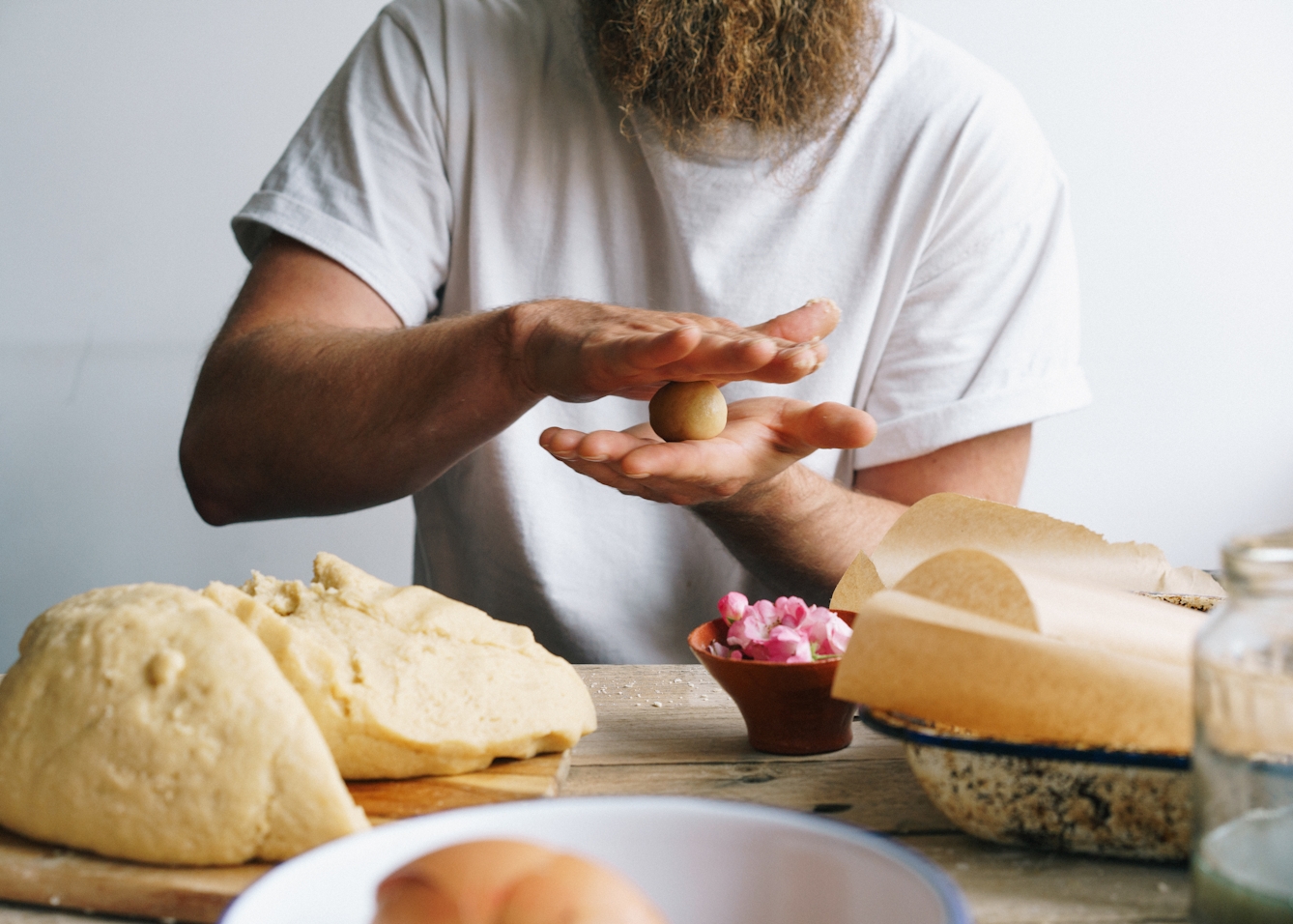
The springy dough was then shaped into small balls.
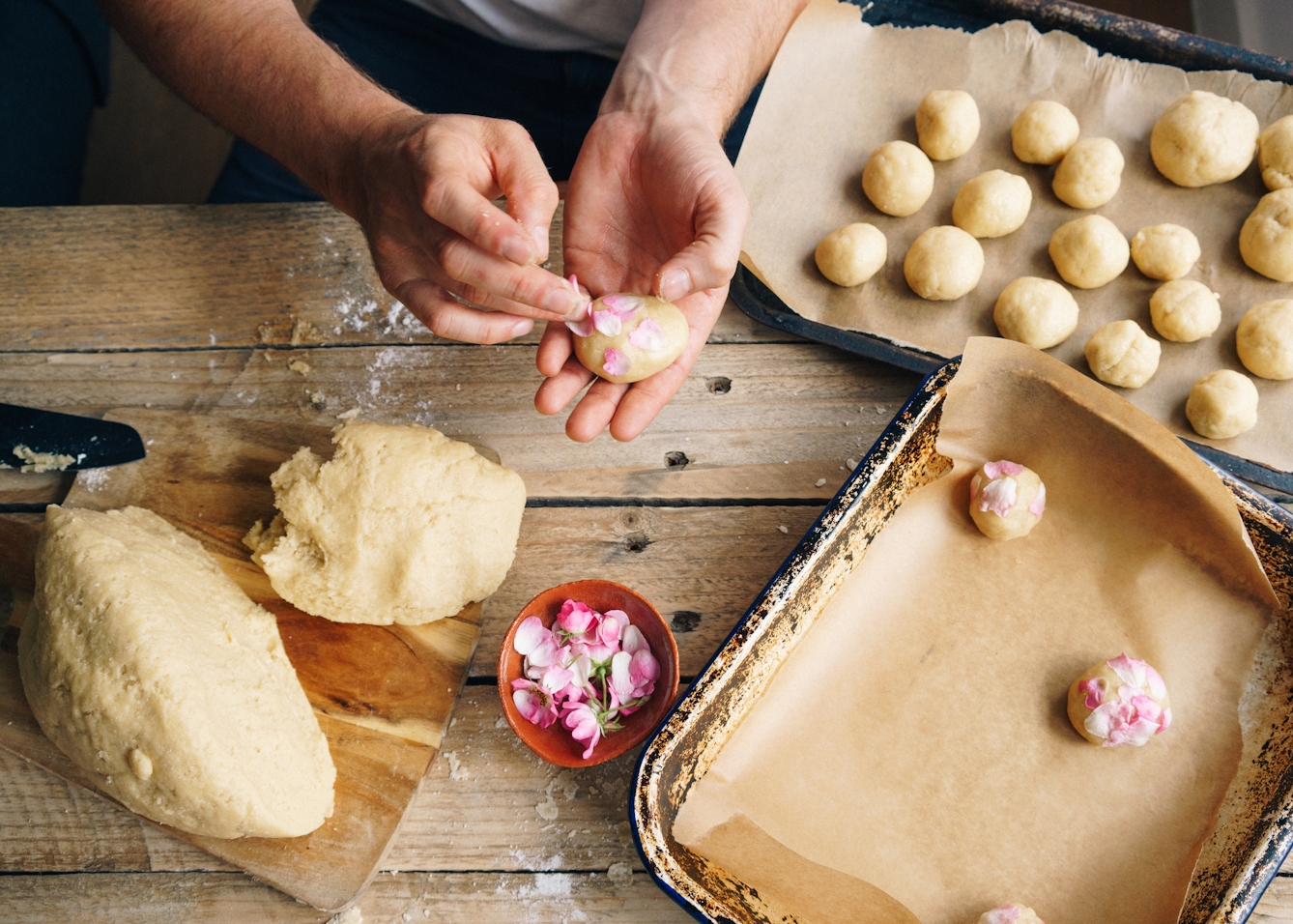
The balls were then placed into an oven preheated to 180°C/350°F and baked for 20 to 25 minutes.
To make rose gumballs
Ingredients:
5½ lbs (2.5 kilos) flour
2 lbs (about 1 kilo) sugar
A little salt
5 eggs
5 tsp yeast
1 pint (600ml) cream
A little rosewaterMethod:
“Take 5 pound and a half of flour, 2 pound of sugar, a little salt, then take 5 eggs, 5 spoonfuls of yeast, a pint of cream, a little rosewater, make all into a paste, roll them into what forms you please, bake them upon fire plates or double papers.”
I followed the recipe not knowing what to expect, but, surprisingly, after a fair amount of mixing I ended up with what seemed to be a smooth, springy dough. I decided to shape them into balls, using the name of the recipe as inspiration, before placing them into an oven preheated to 180°C/350°F.
After 20 to 25 minutes I took the tray out to find golden, steaming, light, fluffy, crumbly yet dense little cakes, almost like scones, but spongier and with a floral note. They were a real surprise to me and so moreish that Marco and I ate them all before they even had a chance to cool down.
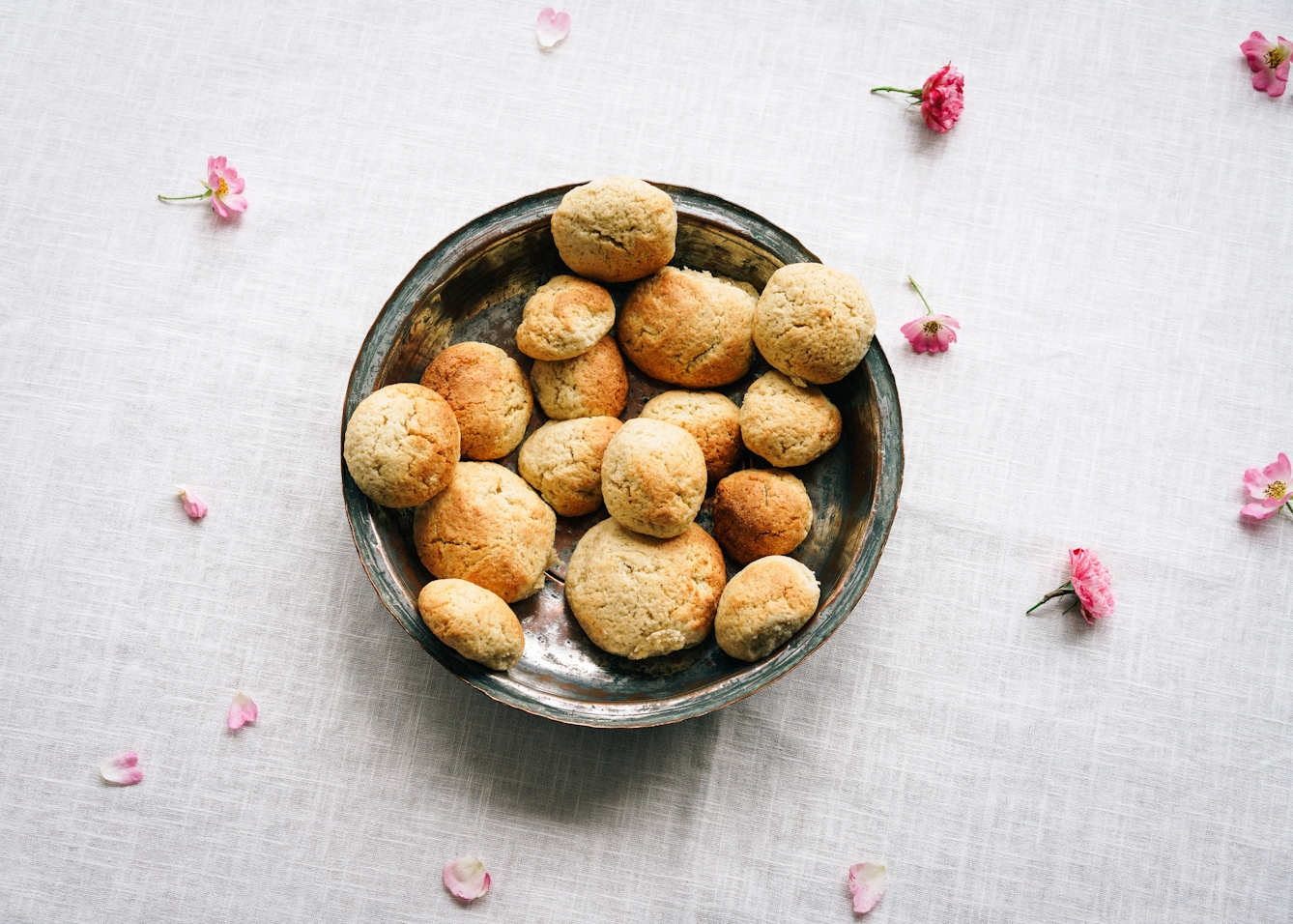
"The final rose gumballs were so moreish we ate them all before they even had a chance to cool down."
Blackberry wine
Our second excursion took place a few weeks later as the heat of the summer sun began to give way to September, when the colour and scent of petals are usurped by the flavour and juices of wild fruits. We were on the lookout for blackberries, or Rubus fruticosus.
Blackberries are the fruit of the bramble bush, which can be found in lots of places in London. This prickly shrub thrives just as well on urban waste ground and verges as it does on the heaths, marshes and commons of the city. Bramble bushes produce a tangled web of vines, with large thorns and matt-green oval leaves dotted alternately across the stems. Each leaf cluster has three to five leaves, which taper to a point and are covered in smaller thorns. The small black fruit are easy to spot.
We found ours on the marshes on the outskirts of the city, away from any traffic except the gentle hum of canal-boat engines. We collected a couple of kilos of berries, and a few scratches from the thorns, before returning to re-create the recipe.
In pictures
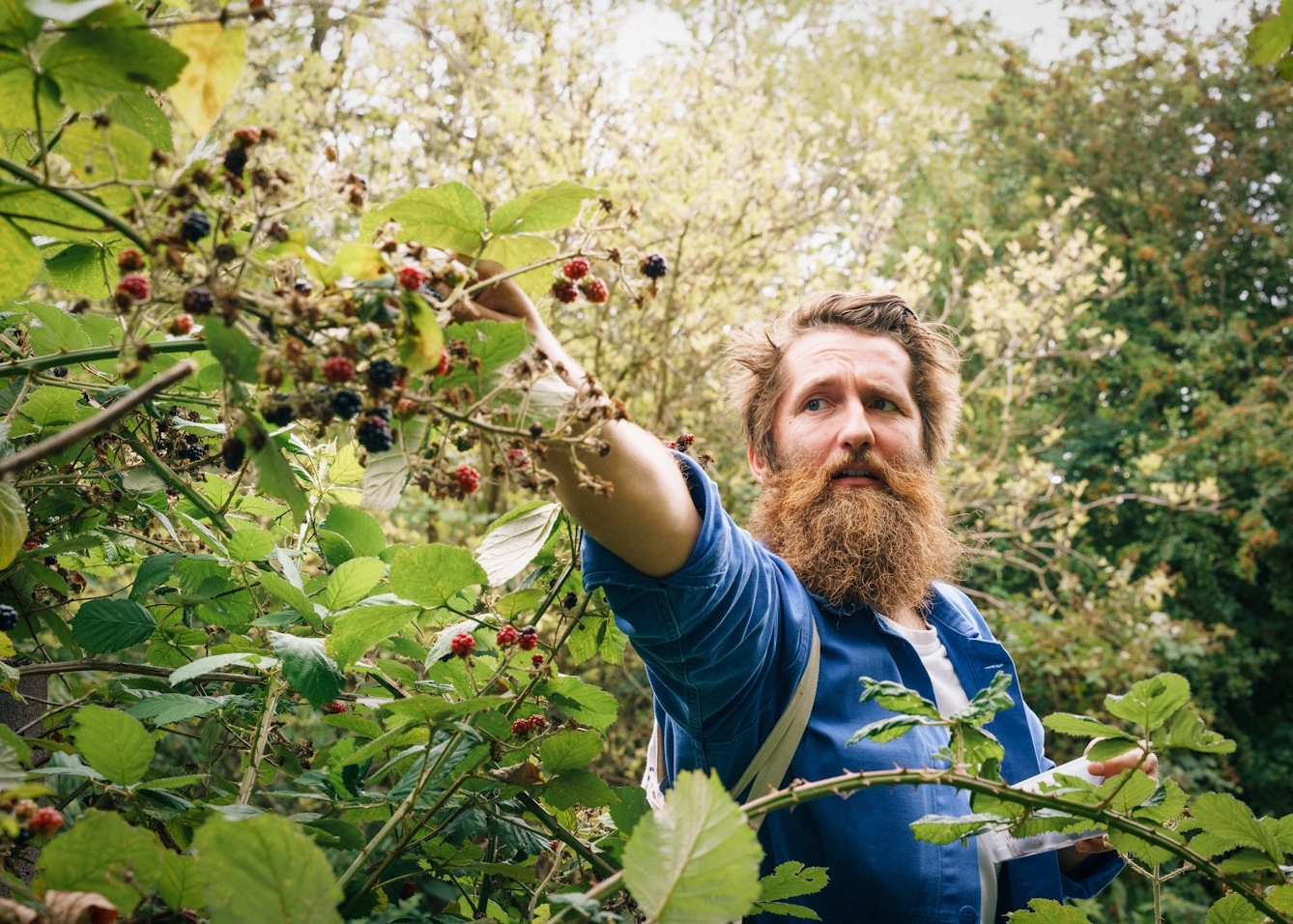
We found our blackberries on the marshes on the outskirts of the city, away from any traffic except the gentle hum of canal-boat engines.
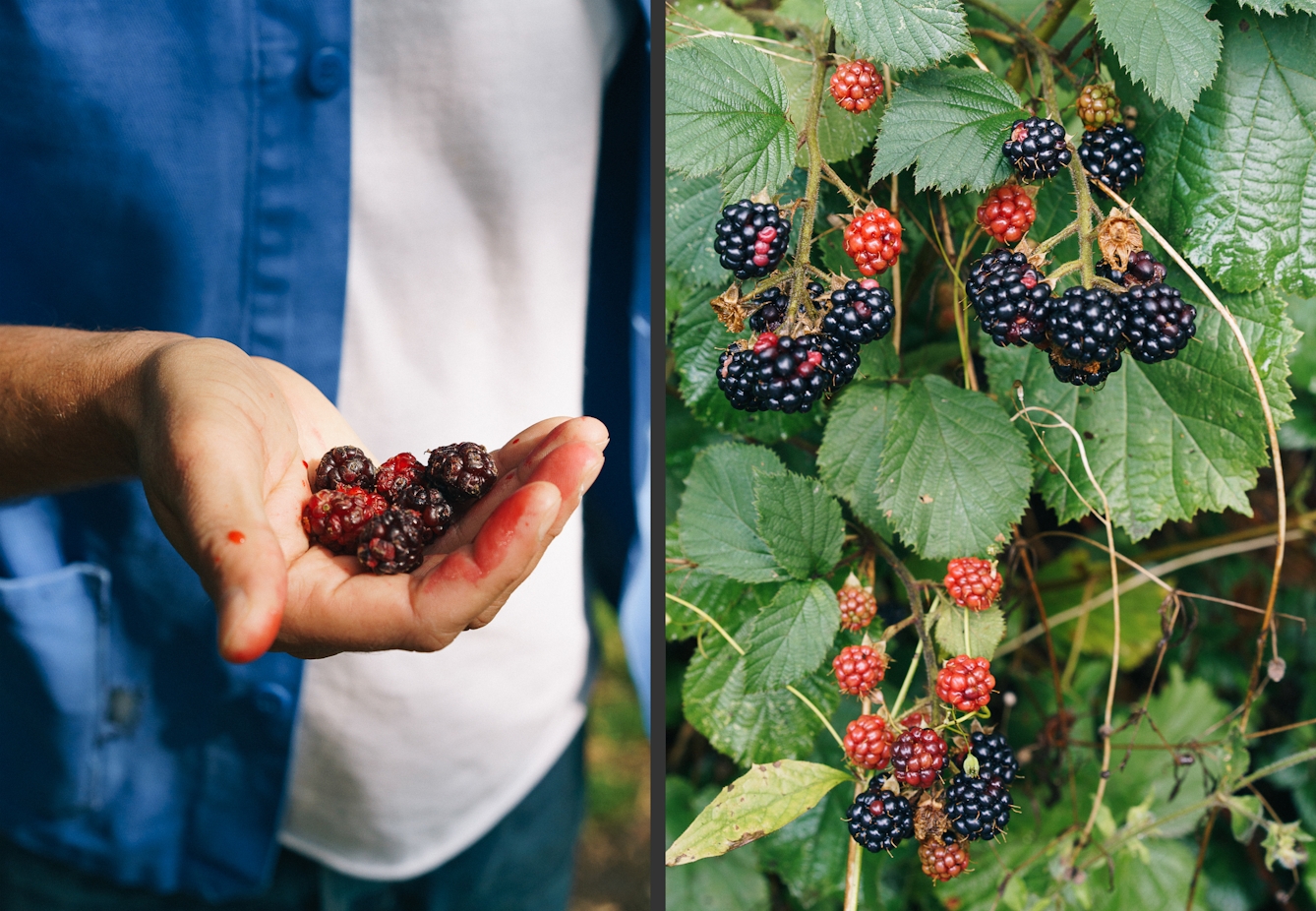
As the heat of the summer sun gives way to September, the colour and scent of petals are usurped by the flavour and juices of wild fruits.
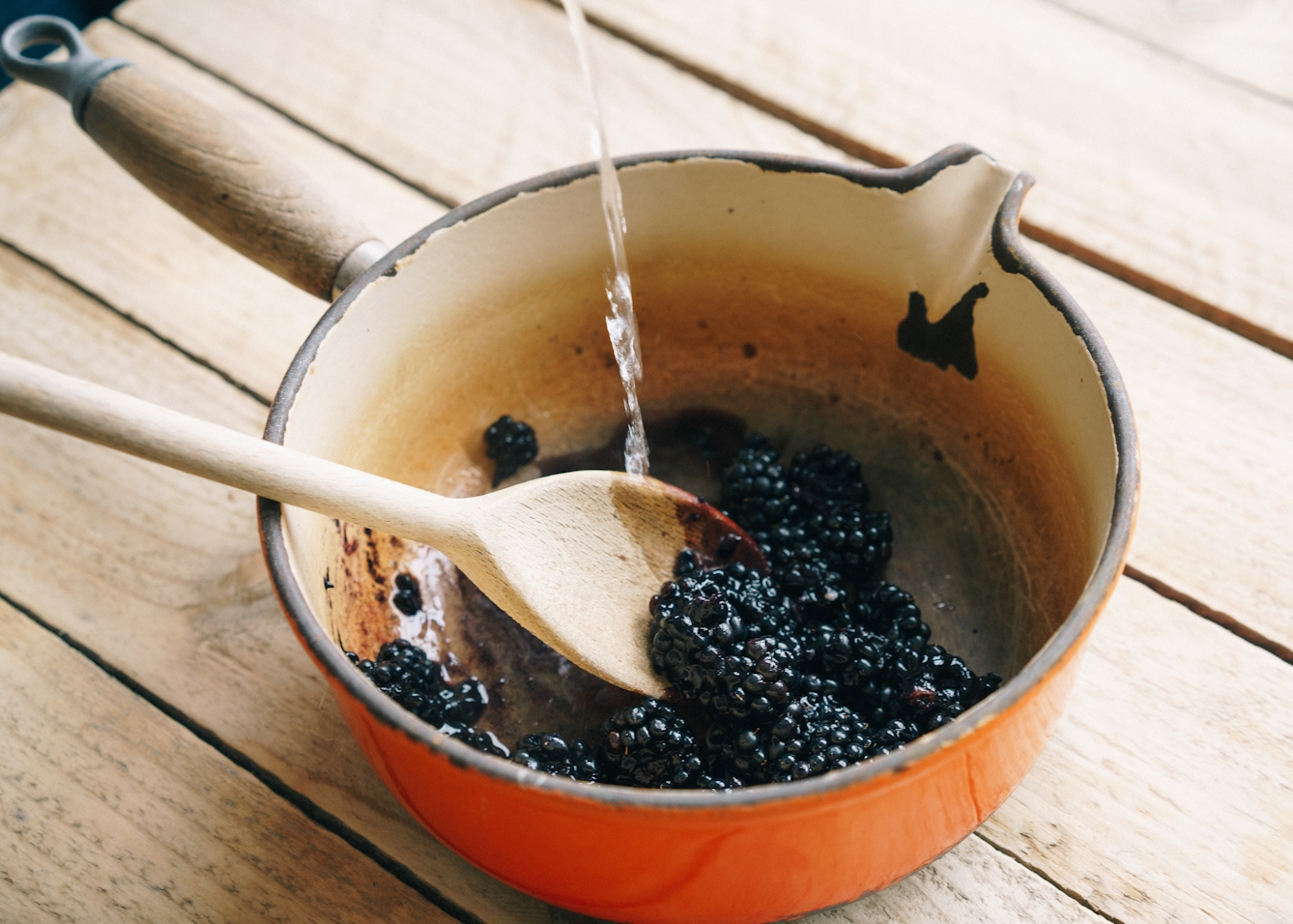
It was a very straightforward recipe to follow and after a couple of days the mixture started to bubble away nicely.
To make blackberry wine
Ingredients:
1 gallon (4.5 litres) blackberries/mulberries
3 pints (1.7 litres) water
½ lb (225 g) brown or white sugarMethod:
“Take as many Blackberries as you please, pick them very clean, and bruise them in a stone morter, and put to every gallon of them 3 pints of water, and half a pound of brown or white sugar, the water being first boiled and almost cold again. When it is all well mixed, strain it out and put it into a Tapstrne, then take the berries and put a little more water to them and a little more sugar, and let it run through the strainer to the rest, cover it very close, and let it stand for a week. Look at it every day and see if it work, before you set it to work, taste if it be sweet enough, if not add more sugar, and when it has worked a week, taste it if it be sharp and clear, then bottle it with a lump of sugar in each bottle.”
It was actually a very straightforward recipe, apart from the “tapstrne”, which I interpreted as calling for a muslin cloth. It took a couple of days for the mixture to start working, at which point it bubbled away nicely. It started to produce a mould that sat on top of the liquid toward the end of the week, so I scooped that out and give the liquid a stir before leaving it again to ferment.
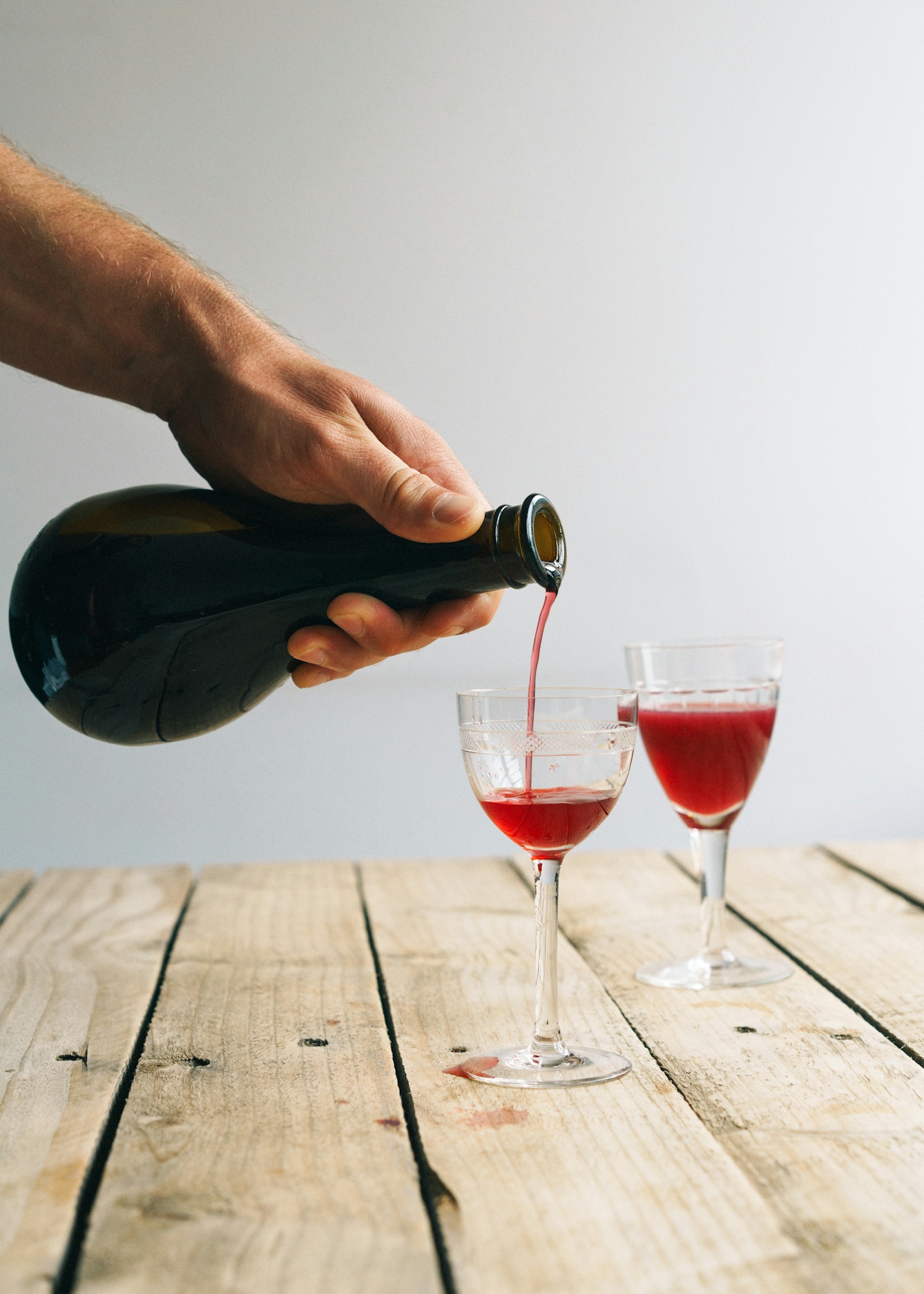
Blackberry wine.
By the end of the week I was left with a rich, sweet, juicy-tasting alcoholic beverage that my wife and I enjoyed with various desserts in the following days to come.
I’ve continued to read through Tully’s recipes and forage for the ingredients since this project. Though the recipes often sound dubious, the food is often surprisingly delicious. Tully takes humble ingredients that have little flavour and adds a wild ingredient to make them sing. I really recommend giving it a go yourself: there are hundreds of recipes to choose from and an abundance of wild ingredients that have been used for centuries that are likely just minutes from your doorstep.
About the contributors
Wross Lawrence
Wross Lawrence is a professional forager and author of ‘The Urban Forager: Find and Cook Wild Food in the City’. He has been harvesting wild food for ten years, supplying Michelin-starred restaurants, royalty, Harrods and many more.
Marco Kesseler
Marco Kesseler is a British photographer with an interest in portraits and contemporary social stories, working with communities over an extended period of time. Past works have been recognised by the Taylor Wessing Portrait Prize, the Sony World Photography Awards and the Renaissance Photography Prize. His work has been published in the FT Weekend Magazine, National Geographic and the Guardian Weekend Magazine. When he’s not out taking pictures, Marco is usually foraging for wild mushrooms or cycling around the UK.
